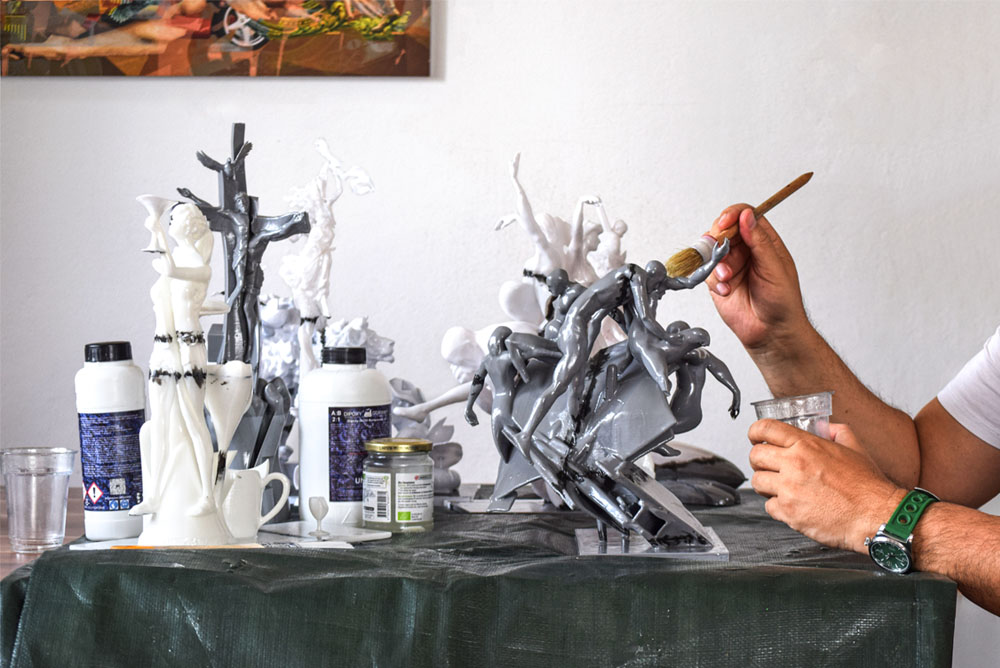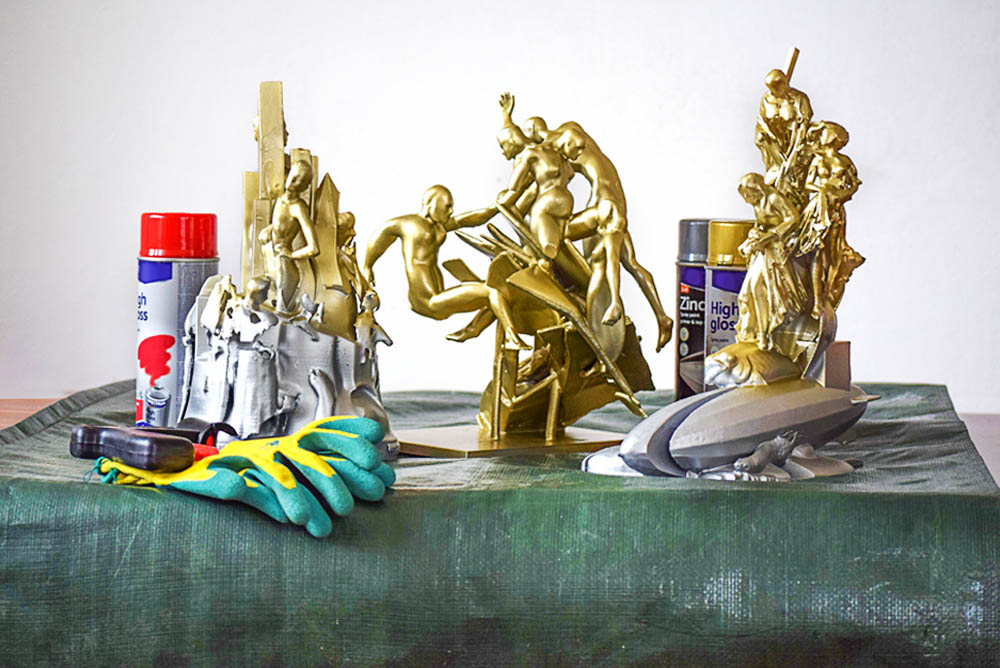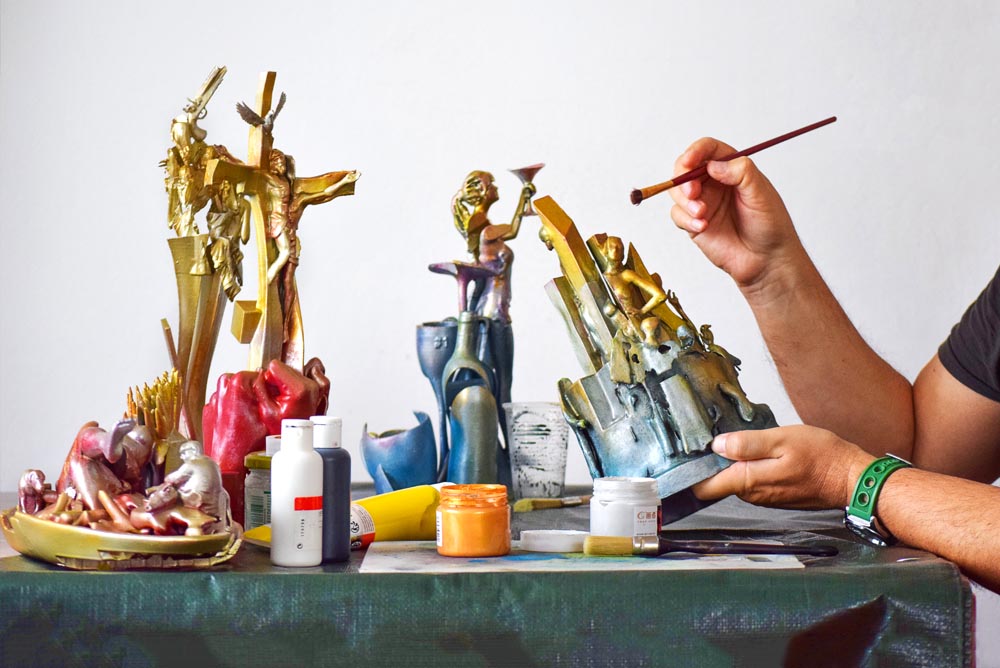1. Sanding
Purpose: Smoothing surfaces, removing rough spots, seams, or layer lines (especially important for 3D prints).
Tools: Sandpaper (different grits, from coarse ~100 to fine ~2000+), sanding sponges, rotary tools (like Dremels).
Method: Devnenski starts with a lower grit to remove major imperfections. Gradually moves to higher grits for a finer, polished finish. He's also sanding wet for achieving an even smoother result ,especially important on PETG filaments which offers a balance of strength and flexibility.
2. Spraying (Priming & Painting)
Devnenski uses two layers of epoxy resign on the printed sculpture to make them even stronger and hide seams and cracks.
Then a Spray Primer - essential to create a uniform surface, especially for 3D prints or raw materials like resin or metal.
Fills tiny scratches and helps paint stick better.
Spray Painting: Provides even color coverage.
Multiple thin layers are better than one heavy coat to avoid drips.
Options include acrylic sprays, automotive paints, and specialty paints like metallics or fluorescents.


3. Color Painting
Brush Painting: Useful for detailed work or textures. Acrylics are most common paintings used by Devnenski (fast-drying, easy to layer).
Airbrushing is also great for smooth gradients, subtle shading, and professional finishes.
Blending Techniques: Devnenski uses dry brushing, washes, and glazing to add depth, realism, and artistic style.

4. Patinas for Bronze Scultures
Natural Patinas: Traditional on metals like bronze or copper, created by chemical reactions (like acids) to add aged, weathered, or colorful effects.
Artificial Patinas: Devnenski applies Paint-based or chemical treatments that mimic the look of real patina without relying on time and weather.
5. Fixatives, Sealants and Wax
Why should be used: Protects the paint or surface from UV light, moisture, and scratches.
Devnenski adds gloss, satin, or matte finishes depending on the desired look. In some cases he applies a couple of thin layers of beeswax and buffes to a shine.
Types: they are usually Spray fixatives (for delicate paint jobs) and
Resin coatings (for a thick, ultra-durable gloss).